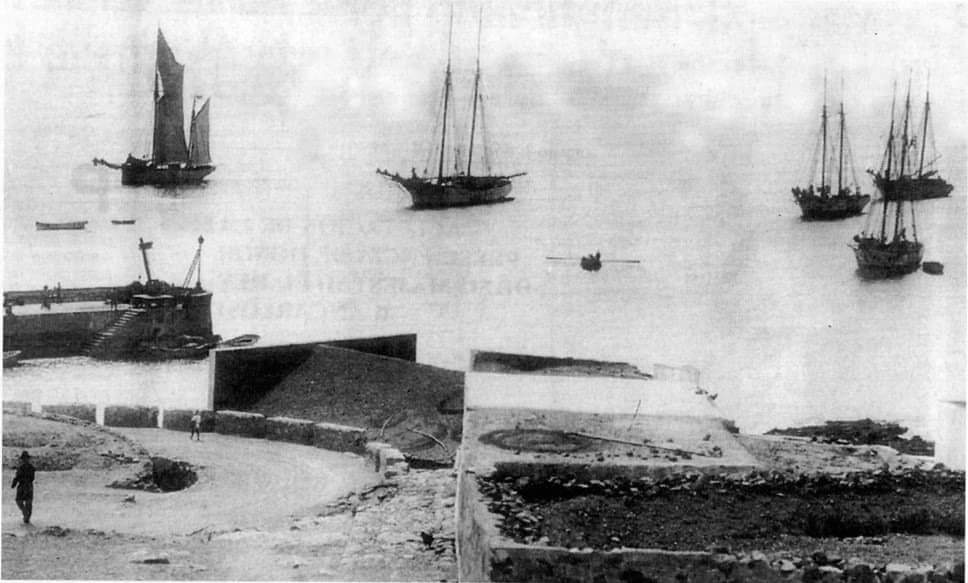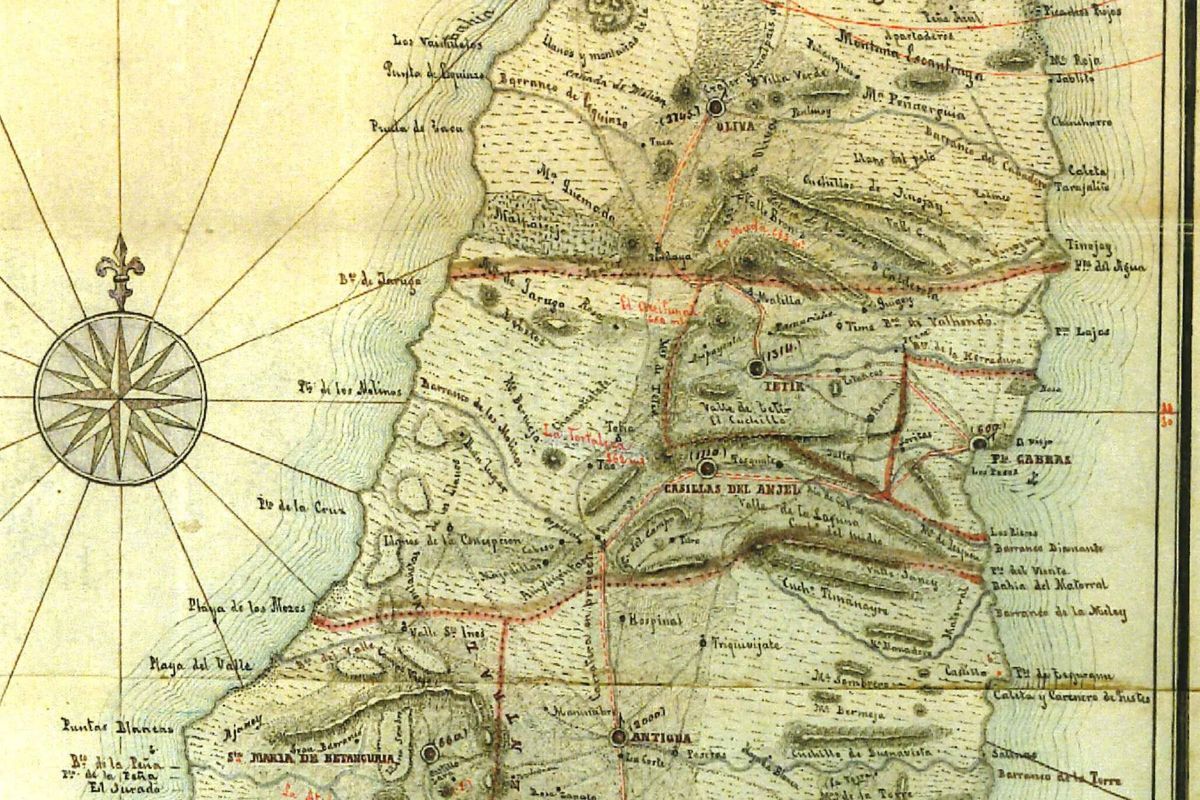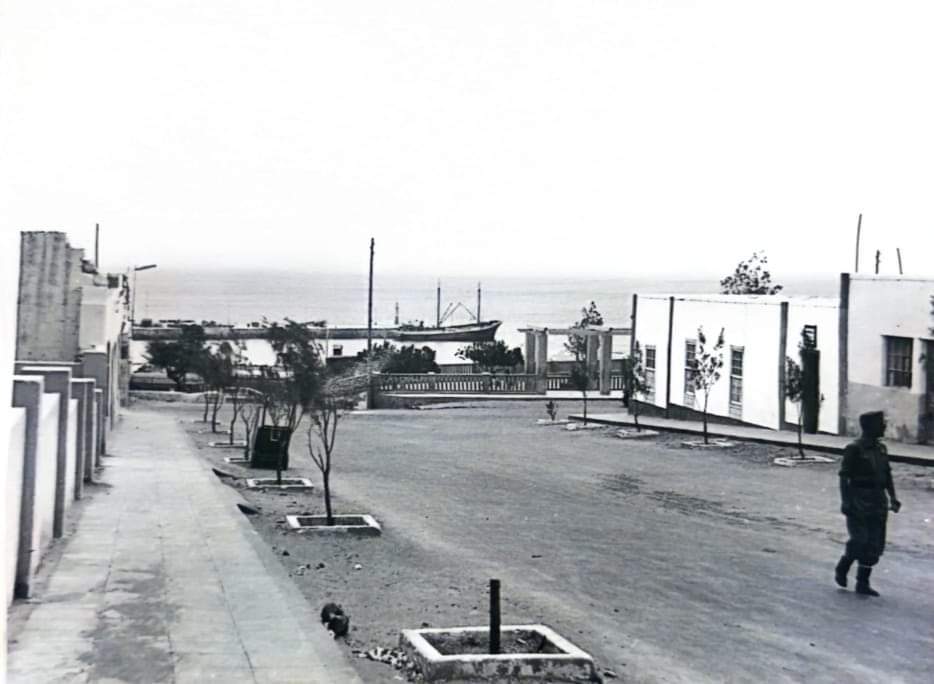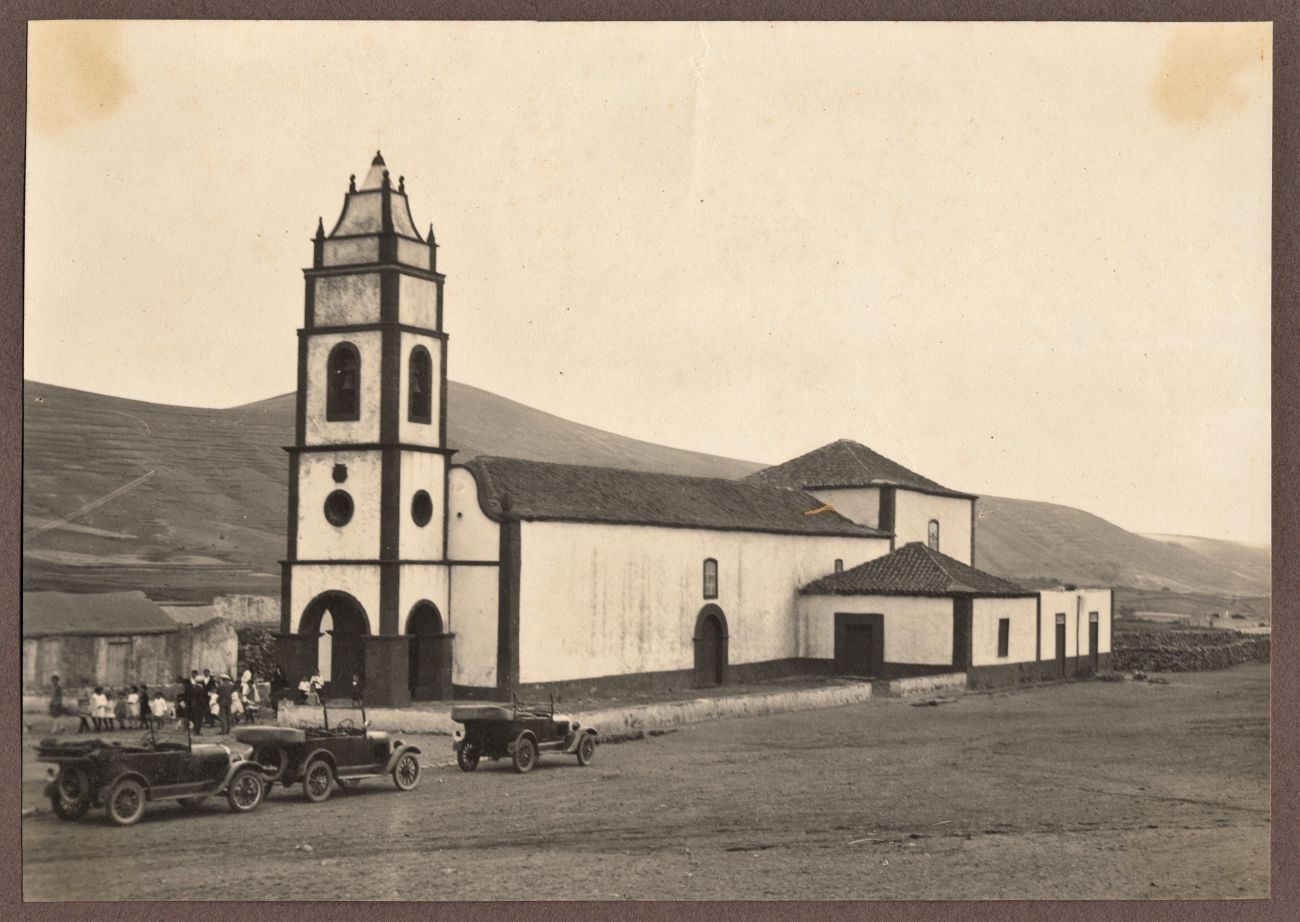In the second episode of the video podcast Mares de Jable, we delve into the modern history of Fuerteventura to understand how, a hundred years ago, Tetir was annexed to Puerto de Cabras. The fusion of the two municipalities was the result of a process not without conflicts, which has generated a historical debt with the people of Tetir.
As historian Carlos Vera explains, what is now the capital of the island was the last municipality in Fuerteventura to be established, fueled by the economic and social drive of a new bourgeoisie emerging around the Puerto de Cabras dock. There was a time when Puerto de Cabras was little more than the beach at Tetir.

There, “traders and the original families settled, because initially that was the coast of Tetir, and they called it as such. The name Puerto de Cabras comes from being an area where livestock was free to roam, the common land, and there were many goats around. That is where the name that lasted for so long came from, and since it became a municipality in 1835, the growth of Puerto Cabras has been constant,” recounts Carlos Vera.
Until the mid-19th century, the greatest economic and social force in Fuerteventura was concentrated in Betancuria, where “there was a single council that functioned as a town hall and governed the whole island,” explains the historian in his interview with Pía Peñagarikano at the Fuerteventura Digital studio.
Vera explains how this system began to change from the 18th century onwards with the reforms of Charles III, which sought to decentralise the administration by appointing local mayors in important towns. These mayors acted as intermediaries, communicating local needs to Betancuria, although they remained subordinate to it.
A key moment in the national territory, and also in Fuerteventura, was the Constitution of Cádiz in 1812, popularly known as “La Pepa,” which established the constitution of municipalities wherever there were parishes. This gave rise to a particular case on the majorera island, as while all the majorera settlements with parishes up to that point were constituted as municipalities in 1835 – Betancuria, Pájara, Tuineje, La Oliva, Antigua, Casillas del Ángel, and Tetir – the case of Puerto Cabras was unique:
“The unique case was Puerto Cabras, which due to its economic strength in 1835, was constituted as a municipality despite not having its own parish.”
– Carlos Vera, historian.

The creation of the municipality of Puerto Cabras marked the beginning of its territorial expansion, which inevitably led to conflicts with neighbouring municipalities, especially Tetir. “There were several significant disputes over municipal boundaries, mainly because Puerto Cabras needed to expand and did so at the expense of Tetir,” notes Vera.
The tensions were reflected in the political connections that Fuerteventura had at a national level. While the prosperous families of Puerto Cabras such as the Castañeyra, the Millers, the Jorge, the Hormiga, or the Peñate had the support in Madrid of a Canary Islands minister, León y Castillo, the resistance in favour of Tetir was led by Manuel Velázquez Cabrera, a majorero deputy from Tiscamanita, who “legally defended the original boundaries.”

The historian also details the economic difficulties faced by Tetir in the years leading up to its annexation. “The situation reached the point where the municipal secretary had neither paper nor pen to write up the town hall minutes”, and for this reason, more and more, throughout the 19th century, its dependence on Puerto Cabras increased, which had more resources due to its growing commercial importance.
For the administration of Tetir at that time, “there were no fixed council buildings. Town hall meetings were held in the private homes of the mayors,” he explains.

“We can confirm this with the minutes from the last years. There were constant complaints and references in the meetings about the lack of payment of salaries to the secretary, the delays in rent payments and payments to the teacher. Poor collections were an almost monotonous topic, and in fact, there was talk of years of debt. Fortunately, at that time, there was more reliance on self-consumption in the primary sector, and people managed with their own means,” recounts the historian.
And these circumstances, he adds, were “the evident causes that led Tetir to not be able to sustain the town hall any longer.”
Moreover, there is a gap in Tetir’s memory regarding how its annexation materialised, with the disappearance of municipal records. “It is a mystery, yes, because we know that they existed. The version of the fusion we have is from Puerto de Cabras, which in June 1925 considers a document from Tetir, in which the merger between both municipalities is requested and agreed upon. That document is a certification from the Tetir Town Hall, which is copied verbatim in the Puerto Town Hall, but the original certification is also missing.”

Then, on 24 June 1925, the annexation of Tetir to Puerto Cabras was officially formalised, an event that Carlos Vera, a local resident, describes with a hint of nostalgia: “I imagine that it was not a pleasant experience for the inhabitants of Tetir to give up their administrative autonomy. But it was inevitable due to the economic and social situation facing the municipality.”
Puerto Cabras continued to grow until it became the current Puerto del Rosario, the island capital since 1913, when the Cabildo, notaries, and property registries had already been established in this city.

“Social life revolved around religion. And everything happened in Tetir, and was registered in the parish of Tetir. Puerto Cabras had no parish of its own until the early 20th century.”
Until 1894, when “the Bishopric allowed Puerto Cabras to have an auxiliary book,” all marriages, births, deaths, baptisms, communions, religious festivals… were celebrated in Tetir, because that was where the parish was.
Thus, for the historian, the annexation between both municipalities leaves a void that needs to be addressed, “a historical debt that Puerto Cabras has with Tetir, because its cultural and social roots come from there.”















